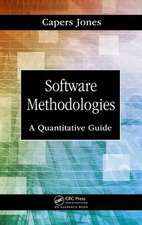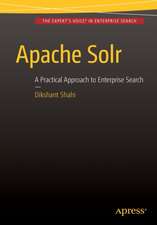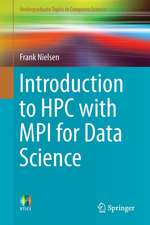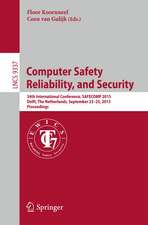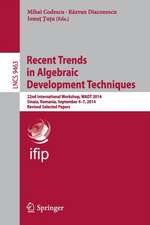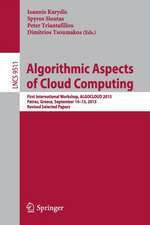Quantifying Software: Global and Industry Perspectives
Autor Capers Jonesen Limba Engleză Hardback – 20 oct 2017
Among the reasons for these software problems is a chronic lack of reliable quantified data. This reference provides quantified data from many countries and many industries based on about 26,000 projects developed using a variety of methodologies and team experience levels. The data has been gathered between 1970 and 2017, so interesting historical trends are available.
Since current average software productivity and quality results are suboptimal, this book focuses on "best in class" results and shows not only quantified quality and productivity data from best-in-class organizations, but also the technology stacks used to achieve best-in-class results. The overall goal of this book is to encourage the adoption of best-in-class software metrics and best-in-class technology stacks. It does so by providing current data on average software schedules, effort, costs, and quality for several industries and countries.
Because productivity and quality vary by technology and size, the book presents quantitative results for applications between 100 function points and 100,000 function points. It shows quality results using defect potential and DRE metrics because the number one cost driver for software is finding and fixing bugs. The book presents data on cost of quality for software projects and discusses technical debt, but that metric is not standardized. Finally, the book includes some data on three years of software maintenance and enhancements as well as some data on total cost of ownership.
| Toate formatele și edițiile | Preț | Express |
|---|---|---|
| Paperback (1) | 254.44 lei 6-8 săpt. | |
| CRC Press – 21 ian 2023 | 254.44 lei 6-8 săpt. | |
| Hardback (1) | 681.01 lei 6-8 săpt. | |
| CRC Press – 20 oct 2017 | 681.01 lei 6-8 săpt. |
Preț: 681.01 lei
Preț vechi: 984.71 lei
-31% Nou
Puncte Express: 1022
Preț estimativ în valută:
130.33€ • 135.56$ • 107.59£
130.33€ • 135.56$ • 107.59£
Carte tipărită la comandă
Livrare economică 14-28 aprilie
Preluare comenzi: 021 569.72.76
Specificații
ISBN-13: 9781138033115
ISBN-10: 1138033111
Pagini: 562
Dimensiuni: 156 x 234 x 35 mm
Greutate: 0.93 kg
Ediția:1
Editura: CRC Press
Colecția Auerbach Publications
ISBN-10: 1138033111
Pagini: 562
Dimensiuni: 156 x 234 x 35 mm
Greutate: 0.93 kg
Ediția:1
Editura: CRC Press
Colecția Auerbach Publications
Public țintă
Professional Practice & DevelopmentCuprins
1. Introduction to Quantifying Software Results. 2. The Origin and Evolution of Function Point Metrics.. 3. Software Information Needed by Corporate Executives. 4. Metrics to Solve Problems and Improve Software Engineering Quality and Productivity. 5. Measures, Metrics, and Management. 6. 50 Years of Global Software Benchmark Results. 7. Advancing Software Benchmark Technology.
Notă biografică
Capers Jones is currently vice president and chief technology officer of Namcook Analytics LLC (www.Namcook.com). Namcook Analytics LLC designs leading edge risk, cost, and quality estimation and measurement tools. Software Risk Master (SRM) is the company’s advanced estimation tool with a patent-pending early sizing feature that allows sizing before requirements via pattern matching. Namcook Analytics also collects software benchmark data and engages in longer range software process improvement, quality, and risk assessment studies. These Namcook studies are global and involve major corporations and some government agencies in many countries in Europe, Asia, and South America.
Descriere
Software measurement practices are so bad that the industry has very sparse reliable data on software schedules, costs, quality, and productivity. Much of the available data is incorrect, incomplete, or both. This book provides quantified software results by country, by industry, by technology, by application size, and by other factors.



